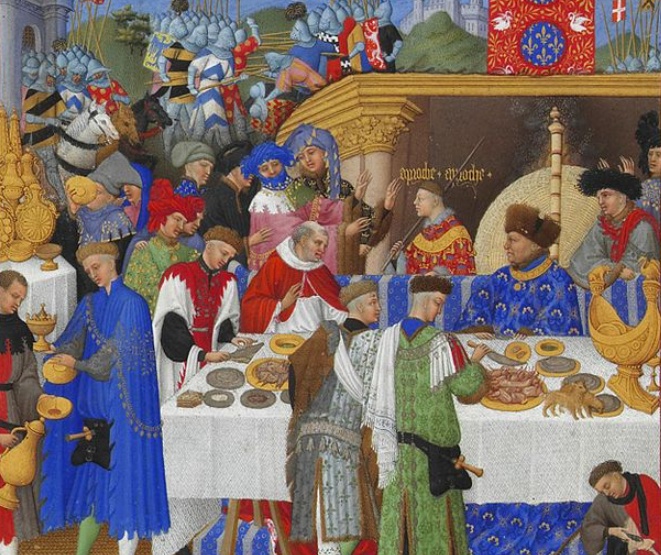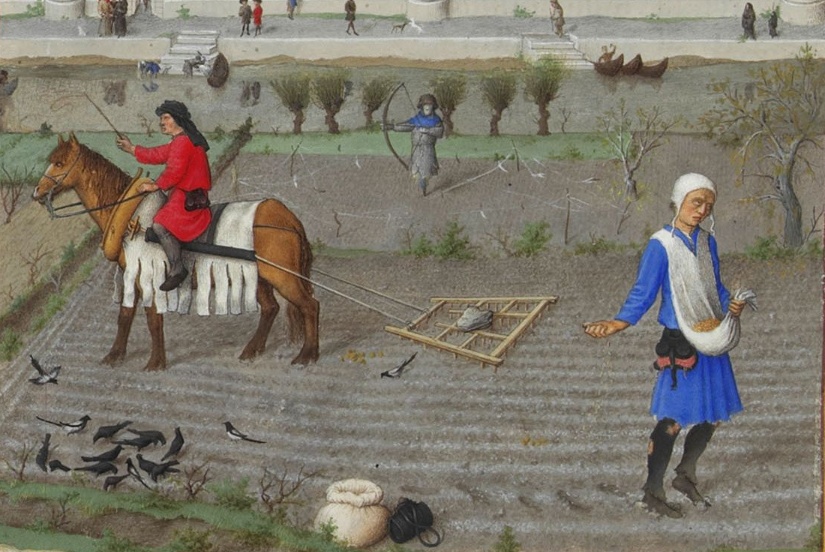In 15th-century France, the art of illuminated manuscripts reached new heights. Building upon the foundations of earlier illustrated works, artists created images that were more refined and elegant, presenting an entirely new spatial perspective. The use of stained glass not only beautified church lighting but also enriched people's understanding of color, significantly aiding illustrators in mastering and utilizing colors.
These manuscripts made substantial advancements in spatial representation, particularly in the depiction and explanation of scenes. Artists employed illusions to make viewers feel as though they were in a three-dimensional space, a technique partially inherited from Italian artists. This illusion changed the relationship between the viewer and the image, transforming illustrated pages into portals through which readers could enter the scenes depicted in the book. This connection between the book and the reader was strengthened, not just in physical proximity but also in social, political, spiritual, and emotional dimensions.
In the early 15th century, the Limburg brothers—Pol, Herman, and Jean—brought the art of manuscript illumination to maturity. They followed in the footsteps of predecessors like Jean Pucelle, expanding the expressive potential of illustrations. For John, Duke of Berry, and the brother of King Charles V of France, they created an exceptionally ornate illuminated prayer book. The Duke of Berry was an avid patron of the arts, known for his collection of manuscripts, jewelry, and various rare handicrafts. His library catalog lists over three hundred illuminated manuscripts, including the "Belleville Breviary" and the "Hours of Jeanne d'Evreux."

The Limburg brothers' masterpiece, "Les Très Riches Heures du Duc de Berry", is one of the most renowned works in the history of illuminated manuscripts. The calendar section of the book, illustrating human activities corresponding to each month, depicts the lives of both nobility and peasants throughout the year. Each illustration features a semi-circular arch at the top, portraying the chariot of the sun and the signs of the zodiac, symbolizing the sun's movement throughout the twelve months. "January" depicts a New Year's reception at court, where the Duke of Berry is shown as a generous host, with a bright screen behind his head resembling a saint's halo. In contrast, "October" focuses on the agricultural life of peasants, depicting a sower, a plowman on horseback, a washerwoman, and residents strolling before the Duke's castle. These illustrations not only demonstrate meticulous detail and skillful use of light and shadow but also reflect the artists' growing interest in naturalism and their careful observation of the natural world.
Beyond its artistic techniques, "Les Très Riches Heures du Duc de Berry" is rich in content. In addition to the calendar, the book includes the "Office of the Blessed Virgin Mary" and various confessions, hymns, litanies to the saints, and other prayers. These religious texts reflect the spiritual lives of the northern nobility of the time and visually express the relationship between the Duke and the peasants, portraying the Duke as a pious, cultured, and generous leader.
The artworks of this period were not merely expressions of religious faith but also microcosms of social life. The expanded range of illustration topics, especially the prominent position of genre subjects within a religious book, highlights the integration of religious and secular life during this era. This blend is particularly evident in "Les Très Riches Heures du Duc de Berry", where the Limburg brothers juxtapose the labor of peasants with the luxurious life of the nobility, creating a stark contrast.

In these illustrations, the Limburg brothers displayed their attention to detail and mastery of light and shadow. For instance, in "October", the scarecrow, the archers, the horses, and the residents strolling in front of the castle are vividly depicted, showcasing the artists' meticulous observation and realistic portrayal of the natural world. Additionally, their focus on architectural details, such as the structure and decorative elements of the Duke's castle, is intricately rendered.
While the identity of individual artists was not always clearly distinguished at the time, as they often collaborated on commissions, the contributions of the Limburg brothers left a significant mark on art history. They passed away in 1416, leaving "Les Très Riches Heures du Duc de Berry" unfinished. The manuscript was later completed by another illustrator, cementing its status as a pinnacle of the era's artistic achievements and providing rich visual and historical material for future generations.
In summary, 15th-century French illuminated manuscripts achieved breakthroughs in both artistic techniques and content, offering a visual representation of the complex social structures and humanistic concerns of the time. These works are not only treasures of art history but also valuable windows into the culture and society of that era. Through these illustrations, we can appreciate the artists' technical prowess and gain insight into their observations of life and understanding of humanity.